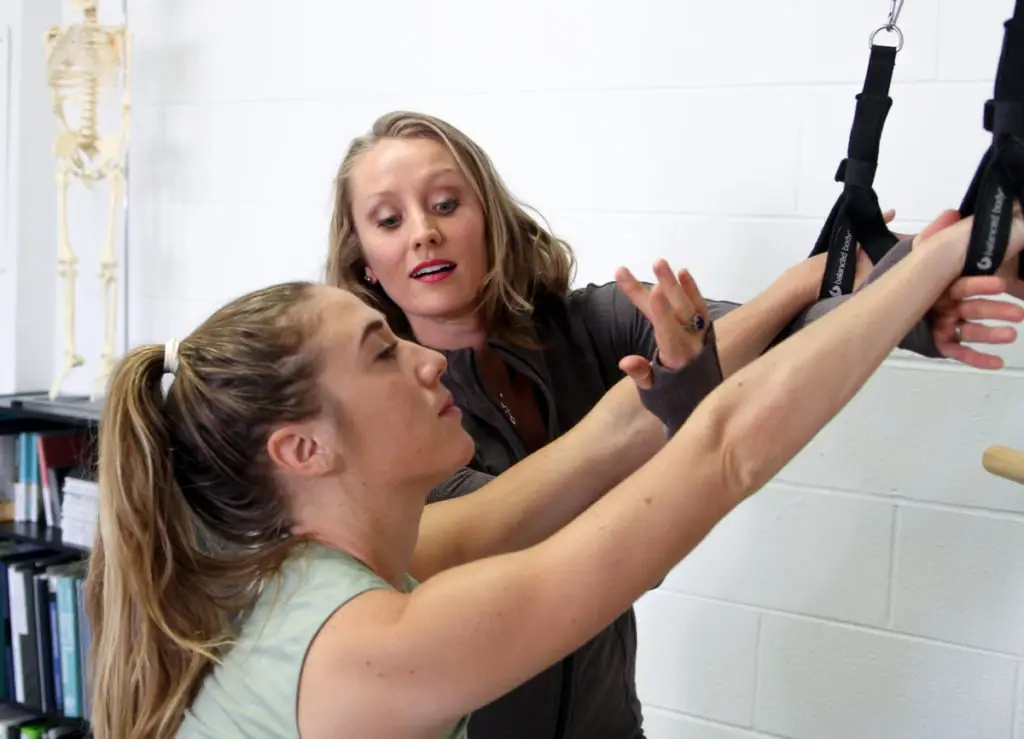This blog is part of the Analyzing Scoliosis series, which is designed to teach movement practitioners how to work confidently with clients who have scoliosis. Previous posts have discussed the typical scoli body, common types of scoli (AIS and functional scoliosis), how to decide when to work with a client, how to handle a misdiagnosed client, and how movement is key. My book, Analyzing Scoliosis, which covers the topics in this series (as well as others) in more depth, is available on Amazon.
Now that you know how important movement is for scoliosis clients, what is your role as their Pilates instructor? The big picture is to facilitate hope and healing in the lives of your scoli clients by, you guessed it, getting them MOVING! When you’re armed with the knowledge to help someone take ownership of their healing process, working with scoli clients can be such a rewarding journey. Every lesson and class you provide scoliosis clients a proactive alternative to the passive option of “watching and waiting.”
Once you’ve met a client and heard about their diagnosis, it’s your job to help them see past misinformation and untrue myths about exercising with a scoliotic spine. You’ll create and implement a movement plan specifically for this client’s needs, help them find other practitioners that can aid them in being proactive with their scoli, and guide them through the emotional inner turmoil they’re most likely experiencing with their scoliosis diagnosis. Just like with any other client, you’ll need to connect with them during their first session and prove you can help them so you gain their trust and they return for more sessions.
Before I jump into how exactly you analyze the spiral spines you see, I need to lay down a few ground rules.
Here is what you cannot do as a Pilates instructor for your clients with scoliosis:
- You cannot diagnose. Even though your postural analysis may show that this client most likely has scoliosis, you cannot diagnose it. A doctor must diagnose scoliosis, but you can work with someone without a diagnosis and help alleviate back pain.
- You cannot read X-rays. Scoliosis must be diagnosed from an X-ray. You are not trained to do that, but you can look at an X-ray and use what you see to help plan a Pilates lesson.
- You cannot change the shape of bones. Clients with congenital scoliosis have malformations of their bones from when they were in utero. Be careful not to mislead these clients into thinking you can decrease their curvature. You may be able to help them become better movers, and you can possibly decrease their pain, but you can’t change the shape of their bones, and therefore, most likely can’t change the shape of their spine.
Now let’s cover what you can do for your scoli clients as a Pilates instructor:
- You can reinstate correct postural plumb lines in all planes. Correct posture is vitally important for the scoliotic body.
- You can safely work out your scoliosis clients. Many people with scoli become paralyzed by the idea of movement making their scoliosis worse and stop moving. You have the opportunity to bless them with safe movement.
- You can offer a solution to those living with a 25-degree scoliosis curve or less that the medical community at large doesn’t offer. The rule of thumb most orthopedists in the US adhere to for people with a 25-degree curve or less is to treat them with the “watch and wait” protocol. This means exactly what it sounds like: no proactive measures are taken, and instead, doctors “watch and see” if the scoliosis progresses to the point of needing back bracing or surgery. For those who won’t settle for that passive approach to their health, Pilates is a wonderful option. When someone with a scoliosis diagnosis walks into your studio and says that “watching and waiting” is not going to work for them, you’ll know it’s your time to shine as a Pilates instructor!
The bottom line: you’re here to put straight lines into the bodies of your clients with scoliosis. There are a myriad of ways this can be accomplished. You already know hundreds, if not thousands, of exercises on many different pieces of equipment to help you accomplish this goal. But before you can determine which exercises will work best for your scoli client, you need to analyze their body so you’ll know exactly what you’re working with. Both analysis and exercise techniques will come later in this series.
In the next blog post I will cover how to build a group of trusted professionals, your client’s “Dream Team”, that will work with you to help your scoli clients.
